 W
WThe Dakota War of 1862, also known as the Sioux Uprising, the Dakota Uprising, the Sioux Outbreak of 1862, the Dakota Conflict, the U.S.-Dakota War of 1862, or Little Crow's War, was an armed conflict between the United States and several bands of Dakota. It began on August 18, 1862, at the Lower Sioux Agency along the Minnesota River in southwest Minnesota, four years after its admission as a state.
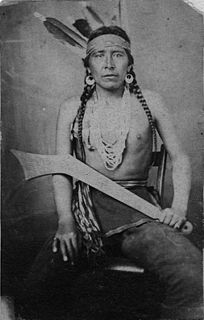 W
WBig Eagle was the chief of a band of Mdewakanton Dakota in Minnesota. He played an important role as a military leader in the Dakota War of 1862. Big Eagle surrendered soon after the Battle of Wood Lake and was sentenced to death and imprisoned, but was pardoned by President Abraham Lincoln in 1864. Big Eagle's narrative, "A Sioux Story of the War," was first published in 1894, and is one of the most widely cited first-person accounts of the 1862 war in Minnesota from a Dakota point of view.
 W
WBirch Coulee Battlefield in Renville County, Minnesota, United States, was the site of the Battle of Birch Coulee, the costliest military engagement for U.S. forces during the Dakota War of 1862. It is now a historic site with self-guided trails and markers interpreting the battle from both sides. Birch Coulee was nominated to the National Register of Historic Places for having state-level significance in military history, and was listed in 1973.
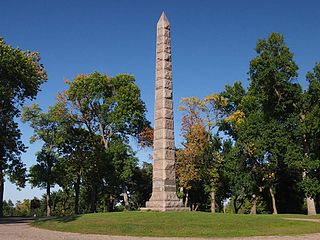 W
WCamp Release State Monument is located on the edge of Montevideo, Minnesota, United States, just off Highway 212 in Lac qui Parle County, in the 6-acre Camp Release State Memorial Wayside. The Camp Release Monument stands as a reminder of Minnesota's early state history. The Minnesota River Valley and Montevideo were important sites in the Dakota War of 1862.
Nicholas C. Creede was an American prospector famous for discovering the Holy Moses Amethyst vein and other mining properties near Creede, Colorado in the late 1880s and early 1890s.
 W
WThe Crow Creek Indian Reservation is located in parts of Buffalo, Hughes, and Hyde counties on the east bank of the Missouri River in central South Dakota in the United States. It has a land area of 421.658 square miles (1,092.09 km2) and a 2000 census population of 2,225 persons. The major town and capital of the federally recognized Crow Creek Sioux Tribe is Fort Thompson.
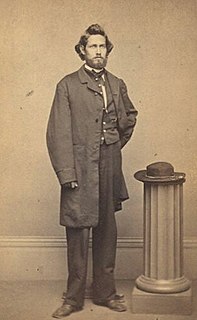 W
WAdrian John Ebell was a doctor, photographer, and proponent of women's education in the United States.
 W
WThe First Congregational Church of Clearwater is a historic church building in Clearwater, Minnesota, United States, built in 1861. It was listed on the National Register in 1979 for having local significance in the themes of architecture and exploration/settlement. It was nominated for its Greek Revival architecture, association with the area's New England settlers, and connection to the "Indian Scares" of 1862 and 1863. After the Dakota War of 1862 and the murder of a Wright County family a year later, area settlers feared further Native American attacks, prompting a third of the Euro-American population to move away permanently. In Clearwater the remaining residents selected their largest and most defensibly sited building—the church—as a potential refuge. It was outfitted with a stockade and a cache of provisions until the passage of several months proved the settlers' fears unwarranted.
 W
WCharles Eugene Flandrau was an American lawyer who became influential in the Minnesota Territory, and later state, after moving there in 1853 from New York City. He served on the Minnesota Territorial Council, in the Minnesota Constitutional Convention, and on the Minnesota territorial and state supreme courts. He was also an associate justice on the Minnesota Supreme Court.
 W
WThe Forest City Stockade was built in central Minnesota to defend settlers in the area from Indian attacks. It became famous during the Dakota War of 1862. Today, visitors to the site can visit a rebuilt stockade and see volunteers in 1800-style dress illustrate period life and activities. A threshing bee takes place across the road in August. The site of the stockade is between Litchfield and Forest City near Minnesota State Highway 24.
 W
WFort Abercrombie, in North Dakota, was an American fort established by authority of an act of Congress, March 3, 1857. The act allocated twenty-five square miles of land on the Red River of the North in Dakota Territory to be used for a military outpost, but the exact location was left to the discretion of Lieutenant Colonel John J. Abercrombie. The fort was constructed in the year 1858. It was the first permanent military settlement in what became North Dakota, and is thus known as "The Gateway to the Dakotas".
 W
WFort Ridgely was a frontier United States Army outpost from 1851 to 1867, built 1853–1854 in Minnesota Territory. It was located northwest of Mankato near Fairfax, and half of the fort's land was on the Dakota reservation in the Minnesota river valley. Fort Ridgely had no defensive wall, palisade, or guard towers. The Army referred to the fort as the "New Post on the Upper Minnesota" until it was named for three brothers named Ridgely, killed in the Mexican–American War.
 W
WJames M. Hinds represented Arkansas in the United States House of Representatives for the 2nd congressional district from June 24, 1868 until his assassination four months later by a Klansman. Hinds was an advocate of civil rights for former slaves.
 W
WThe Joseph R. Brown State Wayside Rest is a National Scenic Byway Wayside Rest area. It is located on Renville County Highway 15, south of Sacred Heart, Minnesota, United States.
 W
WLake Shetek State Park is a state park of Minnesota, United States, on Lake Shetek, which is the largest lake in southwestern Minnesota and the headwaters of the Des Moines River. It is most popular for water recreation and camping. However the park also contains historical resources related to the Dakota War of 1862, including an original log cabin and a monument to 15 white settlers killed there and at nearby Slaughter Slough on August 20, 1862.
 W
WLittle Crow III was a Mdewakanton Dakota chief who led a faction of the Dakota in a five-week war against the United States in 1862.
 W
WThe Lower Sioux Agency, or Redwood Agency, was the federal administrative center for the Lower Sioux Indian Reservation in what became Redwood County, Minnesota, United States. It was the site of the Battle of Lower Sioux Agency on August 18, 1862, the first organized battle of the Dakota War of 1862.
 W
WMonson Lake State Park is a state park of Minnesota, USA, originally established as a memorial to 13 Swedish American pioneers who were killed there in the Dakota War of 1862. A district of 1930s New Deal structures is on the National Register of Historic Places. Despite being nearly doubled in size in 2009, the state park remains one of Minnesota's smallest. It is located off Minnesota State Highway 9 just west of Sunburg and 20 miles (32 km) northwest of Willmar. This seasonally-staffed park is managed from nearby Sibley State Park.
 W
WAndrew J. Myrick, was a trader who, with his Dakota wife, operated stores in southwest Minnesota at two Indian agencies serving the Dakota near the Minnesota River.
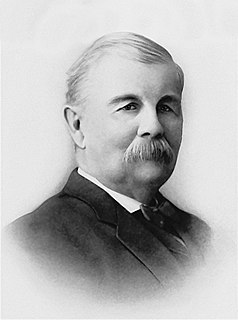 W
WSamuel Hopkins Nichols was a politician and civic leader in the states of Minnesota and Washington. He was a pioneer of Salem Township and Fergus Falls in Minnesota as well as of Everett, Washington. He was a Clerk in Salem Township and president of the Fergus Falls City Council, served as County Commissioner for Olmsted County, Minnesota, Assistant Clerk and Chief Clerk for the Minnesota House of Representatives, and Clerk of the state Supreme Court. In Everett, Nichols helped incorporate the city's first Chamber of Commerce and was a member of its first City Council. He was elected the fourth Secretary of State of Washington in 1901 and re-elected twice. He served at the position two full terms, but had to resign in the beginning of his third term due to accusations of malfeasance and corruption.
 W
WJohn Other Day (Anpetu-Tokeka) was a Dakota mediator from Minnesota who sought peace between Native people and white settlers.
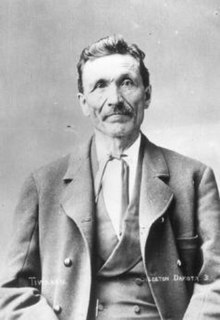 W
WGabriel Renville, also known as Ti'wakan, was Chief of the Sisseton Wahpeton Oyate Sioux Tribe from 1866 until his death in 1892. He opposed conflict with the United States during the Dakota War of 1862 and was a driving force within the Dakota Peace Party. Gabrielle Renville's influence and political leadership were critical to the eventual creation of the Lake Traverse Indian Reservation, which lies mainly in present-day South Dakota.
 W
WHenry Hastings Sibley was a fur trader with the American Fur Company, the first U.S. Congressional representative for Minnesota Territory, the first governor of the state of Minnesota, and a U.S. military leader in the Dakota War of 1862 and a subsequent expedition into Dakota Territory in 1863.
 W
WSlaughter Slough is a wetland in southwestern Minnesota, United States, so named for being the site of the Lake Shetek Massacre during the Dakota War of 1862. It is located in Murray County east of Lake Shetek. On August 20, 1862, about 40 Dakota men attacked the Euro-American settlers living nearby, killing 15 and taking a dozen women and children captive. 21 settlers escaped or survived the attack and made difficult journeys across the prairie to safety. A band of pacifist Dakota later ransomed the eight surviving captives, who were reunited with their families.
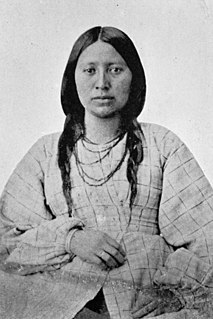 W
WSnana (1839–1908), also known as Maggie Brass, was a Mdewakanton Dakota woman who rescued and protected a fourteen-year-old German girl, Mary Schwandt, after she was taken captive during the Dakota War of 1862. She was reunited with Mary Schwandt Schmidt in 1894, leading to a feature article in the Saint Paul Pioneer Press. Snana’s narrative of the war, “Narration of a Friendly Sioux,” was edited by historian Return Ira Holcombe and published in 1901.
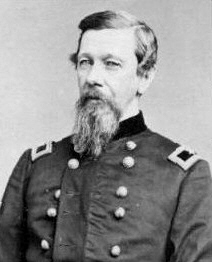 W
WAlfred Sully, was a military officer during the American Civil War and during the Indian Wars on the frontier. He was also a noted painter.
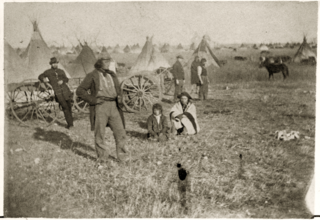 W
WThe Surrender at Camp Release was the final act in the Dakota War of 1862. After the Battle of Wood Lake, Colonel Henry Hastings Sibley had considered pursuing the retreating Sioux, but he realized he did not have the resources for a vigorous pursuit. Furthermore, he was aware that Chief Little Crow had been losing support and was in contact with several Mdewakanton chiefs who had signaled their opposition to further conflict.
 W
WThe Treaty of Traverse des Sioux was signed on July 23, 1851, at Traverse des Sioux in Minnesota Territory between the United States government and the Upper Dakota Sioux bands. In this land cession treaty, the Sisseton and Wahpeton Dakota bands sold 21 million acres of land in present-day Iowa, Minnesota and South Dakota to the U.S. for $1,665,000.
 W
WUpper Sioux Agency State Park is a Minnesota state park on the Minnesota River, south of Granite Falls. It preserves the site of the historic Upper Sioux Agency, which was destroyed in the Dakota War of 1862. The agency site was listed on the National Register of Historic Places in 1970 for having state-level significance under the themes of archaeology, architecture, education, and social history. Chief Walking Iron Mazomani, a leader of the Wahpetonwan Dakota tribes who was killed during the 1862 Dakota War's Battle of Wood Lake, is buried at this location.
 W
WHenry Benjamin Whipple was the first Episcopal bishop of Minnesota, who gained a reputation as a humanitarian and an advocate for Native Americans.